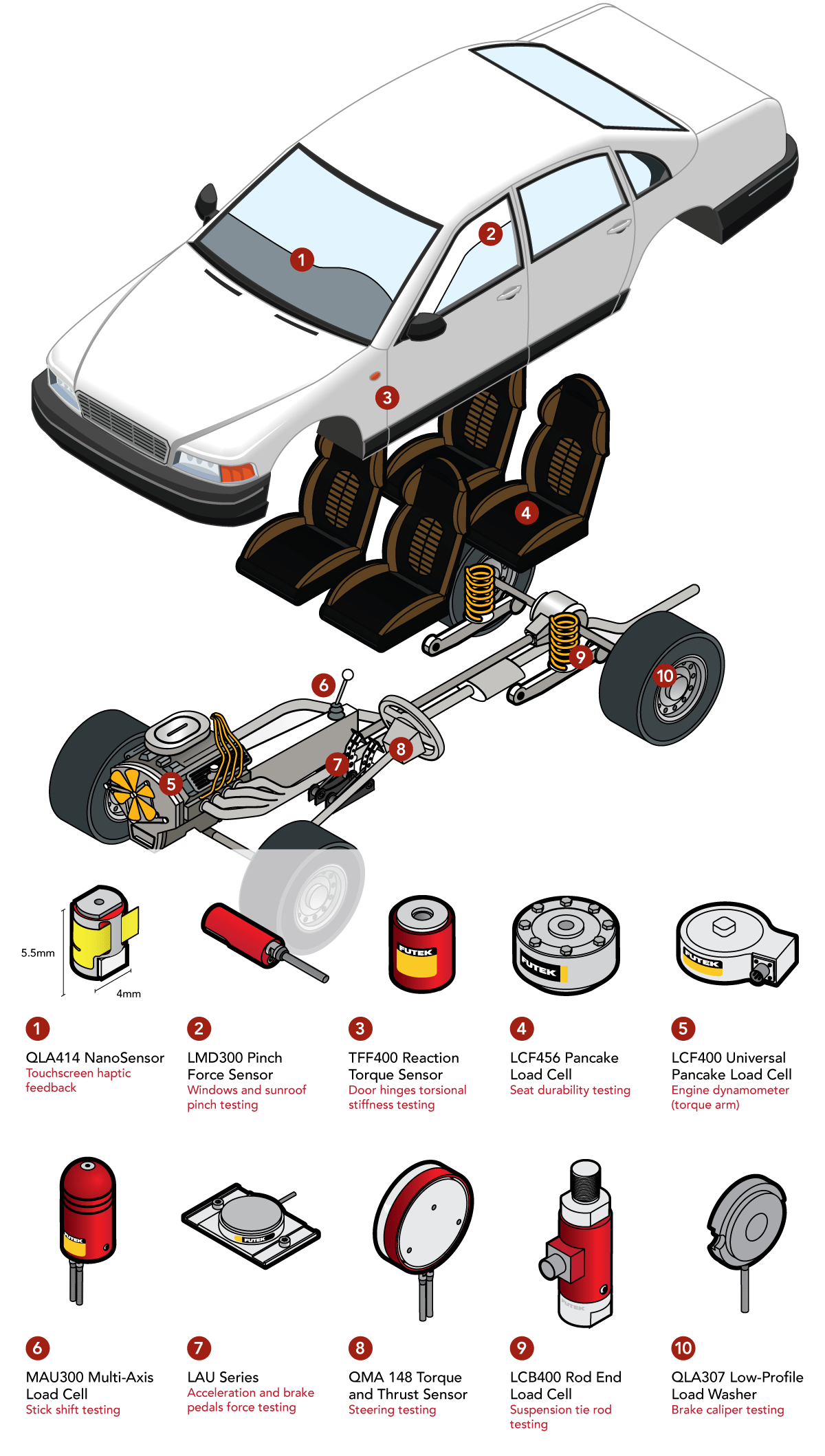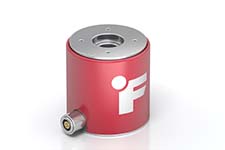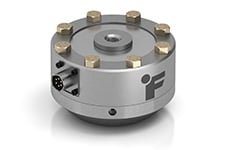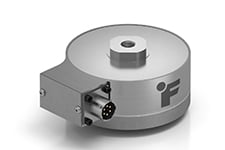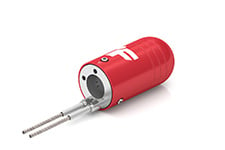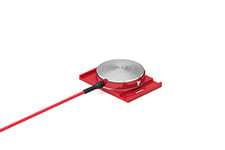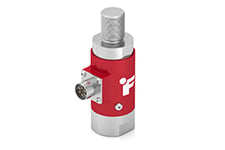Automotive Components Durability and Fatigue Testing – Design Validation
Automotive durability testing supports component and OEM manufacturers’ evaluation of vehicles, subsystems and components to determine expected product life. Tests use real-world motions and forces to assess and validate the design and improve quality. FUTEK supports automotive OEMs and subsystem manufacturers by offering a broad range of sensors that are optimized for automotive testing (car sensors). In addition to complete vehicles, automotive durability testing evaluates components including engine, suspension, stick shift, brakes, steering wheel, windows, chassis, frame, infotainment system, door hinges and, seating, interiors, and suspension. Capabilities include testing for cyclic fatigue, functional safety, deflection, electrodynamic vibration, strain measurements, and more.
This application note provides a car sensor list and its functions, depicting many force and torque sensors applications for vehicle design validation.
Automotive Industry Standards Compliance
- FMVSS 118: Power-Operated Window, Partition, and Roof Panel Systems;
- ASTM D3574 B1 / ISO 2439: Seat Foam Indentation Force Deflection (IFD);
- SAE J2909: Light Vehicle Dry & Wet Stopping Distance Test Procedure (brake testing);
- ECE R13H: Provisions for passenger cars braking;
- ISO 7975: Passenger cars - Braking in a turn - Open-loop test method;
- ISO 13849-1:2015 Safety of machinery - Safety-related parts of control systems;
- ISO 26262-1:2018 Road vehicles - Functional safety
- FMVSS No. 206: Door Locks and Door Retention Components
FUTEK Sensors Automotive Testing Capabilities
- Durability and Performance Test;
- Fatigue and Vibration Test;
- Torsional and Rotating Tests;
- Multi-Axis Durability Test;
- Functional safety;
- Eletro-mechanical control loop validation.
How it Works
Touchscreen haptic feedback: By incorporating load cells to measure contact force, the onboard computer can confirm correct and incorrect inputs using varying tapping forces distributed on the x and y screen axis, ensuring input is correctly validated. QLA414 Nanosensors are on each corner of the touchscreen mount points. As the user taps the screen, the load cells measure the touchscreen tapping force.
Brake caliper: In brake-by-wire systems, central controllers require accurate information about the clamp force between the brake pad and the disc as a function of pad displacement, which is usually denoted as the characteristic curve of the caliper. Due to aging, temperature, and other environmental variations, caliper characteristic curves vary with time. Therefore, automatic caliper calibration in real-time is vital for high-performance braking action and vehicle safety. Plus, during design validation, engineers use force measurement system to validate and calibrate the brake by wire closed-loop systems. QLA307 Load Washer is low profile and can take massive loads, and is commonly used for Caliper load cell for Brake Pad Testing.
Windows and sunroof pinch: Utilizing FUTEK's Pinch Load Cell (aka Pinch Force Sensor), automotive manufacturers can verify the pinch force on power windows and sunroofs. This precise, easy-to-use hand-held sensor is designed to help automakers comply with Federal Motor Vehicle Safety Standard FMVSS 118 (Power-Operated Window, Partition, and Roof Panel Systems) and International standards. These standards specify requirements for power-operated window, partition, and roof panel systems to minimize the likelihood of death or injury from their accidental operation.
Door Hinges torsional stiffness: When it comes to hinges, torque is the amount of energy or effort needed to open or close a door or panel. The energy required depends on the door’s weight; the travel distance or arc of motion from closed to open; and whether the hinges must hold the door or panel partially open or the door will always go from fully open to completely closed. Utilizing FUTEK TFF400 Reaction Torque Sensors, engineers can validate the right level of torque throughout multiple open-close hinge cycles, which is essential for safe and reliable operations, as well as good user experiences.
Seat durability: In the automotive industry, robots are used to cycle test seats for wear and durability. Automakers research how people of all shapes and sizes affect the upholstery, seat cushions and seat structures over the life of the vehicle. Accuracy is a very important factor when measuring the Indentation Force Deflection (IFD) during automotive seat testing in compliance with ASTM D3574 B1. FUTEK’s LCF456 Fatigue Rated Pancake Load Cell is integrated into the robot arm end-effector to measure compression force placed onto a seat.
Engine Dynamometer (torque arm): Engine manufacturers and performance testing labs use engine dynamometers (or engine dyno) to isolate the engine’s power output and measure performance factors such as horsepower, acceleration, and mileage. Chassis dyno (or car dyno) applies a load against the engine and the torque absorbed by the loading mechanism is then transferred by a torque arm to a load cell sensor, which is integrated into the energy-absorbing device. LCF400 load cell accurately measures the load applied by the engine dyno torque arm. Engineers are then able to analyze the power transfer to the engine and optimize the vehicle performance.
Stick gearshift testing: The MAU300 Stick Shift Sensor is yet another unique product offered for the Automotive Industry and is ideal for automotive gearshift actuation force measurement applications. Designed to test the Fx and Fy loads taken place during gear shifting, the MAU300 is intended for manual use/human testing.
Acceleration and brake pedals force: Brake system testing is normally carried out during various stages of the manufacturing process. It starts in the initial development stage, followed by endurance, lab and track testing, and continues through the production process for added quality assurance. Utilizing LAU220 Pedal Force Sensors (aka Brake Load Cell), automotive manufacturers are able to verify the safety and reliability of their automobile's braking mechanics. Pedal Force Sensors (vehicle sensors) are designed to measure load applied to the brake, accelerator, and clutch pedals during acceleration, deceleration, and transmission shift events.
Steering wheel: Steer-by-Wire (SbW) technology in the automotive industry is the use of electronics, actuators, and algorithms to replace hydraulic and mechanical connections between the hand steering wheel and the road. During the product validation phase, the QMA148 Low Profile Torque and Thrust Sensor provide quality assurance and control engineers with the appropriate tools to measure the rotational torque applied to steering controls.
Suspension tie rod - Front suspension frame durability & fatigue tests: Complex multipoint suspension systems in use in high-performance vehicles require the use of modeling and simulation to ensure compliance under load. However, the final step to validate the simulation model live testing. To accomplish this, load cells are placed in line with each suspension arm, providing data of the load running through each arm, accurate steering load measurements, and indirect front tire grip enabling adjustments of the suspension system to optimize performance and handling.
Products in Use
- QLA414 Nano Sensor – Touchscreen haptic feedback;
- LMD300 Pinch Force Sensor – Windows and sunroof pinch testing;
- TFF400 Reaction Torque Sensor – Door Hinges torsional stiffness testing;
- LCF456 Pancake Load cell – Seat durability testing;
- LCF400 Universal Pancake Load cell – Engine Dynamometer (torque arm);
- MAU300 Multi-Axis Load Cell – Stick shift testing;
- LAU220 Pedal Force Sensor – Accelaration and brake pedals force testing;
- QMA148 Torque and Thrust Sensor – Steering wheel testing;
- LCB400 Rod End Load Cell – Suspension tie rod testing;
- QLA307 Low Profile Load Washer – Brake caliper testing.
Contact Us
Please Contact Us with questions.
Automotive Components Durability and Fatigue Testing – Design Validation
Automotive durability testing supports component and OEM manufacturers’ evaluation of vehicles, subsystems and components to determine expected product life. Tests use real-world motions and forces to assess and validate the design and improve quality. FUTEK supports automotive OEMs and subsystem manufacturers by offering a broad range of sensors that are optimized for automotive testing (car sensors). In addition to complete vehicles, automotive durability testing evaluates components including engine, suspension, stick shift, brakes, steering wheel, windows, chassis, frame, infotainment system, door hinges and, seating, interiors, and suspension. Capabilities include testing for cyclic fatigue, functional safety, deflection, electrodynamic vibration, strain measurements, and more.
This application note provides a car sensor list and its functions, depicting many force and torque sensors applications for vehicle design validation.
Automotive Industry Standards Compliance
- FMVSS 118: Power-Operated Window, Partition, and Roof Panel Systems;
- ASTM D3574 B1 / ISO 2439: Seat Foam Indentation Force Deflection (IFD);
- SAE J2909: Light Vehicle Dry & Wet Stopping Distance Test Procedure (brake testing);
- ECE R13H: Provisions for passenger cars braking;
- ISO 7975: Passenger cars - Braking in a turn - Open-loop test method;
- ISO 13849-1:2015 Safety of machinery - Safety-related parts of control systems;
- ISO 26262-1:2018 Road vehicles - Functional safety
- FMVSS No. 206: Door Locks and Door Retention Components
FUTEK Sensors Automotive Testing Capabilities
- Durability and Performance Test;
- Fatigue and Vibration Test;
- Torsional and Rotating Tests;
- Multi-Axis Durability Test;
- Functional safety;
- Eletro-mechanical control loop validation.
